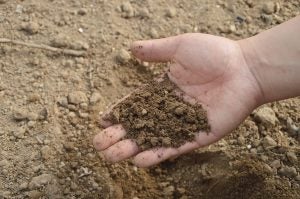The term “soil health” gets tossed about quite a bit these days, sometimes by those who really embrace it, but sometimes by those that only employ it as an attention-getter. Truly learning about something new takes a bit of time and effort. Too often we find farmers, researchers, educators, suppliers and government folks talking past one another — not really stepping back to look at the bigger picture.
The bigger picture, as I see it, should look at the basic resources and processes that make agriculture tick. For agriculture to happen, people, water, sunlight, plants, and animals must all successfully intersect in the soil. Other than classification and nutrient testing, the integration of resources in the soil is often taken for granted. Few folks know how the soil functions to serve as the vital integrator of resources that must occur in the production of crops. This is where we have lost our way. This is what we have not paused to understand. This is where we are in trouble.
What is needed is a better understanding of how the soil functions.
For a very long time we have tinkered with the soil and observed how it reacts to tillage, fertilizers, and a variety of other inputs and activities and make our best guesses about how to manage it. But without actually understanding how the soil was designed to function we can never really restore it to its full powers.
In recent years, soil biologists have begun to identify the true workings of the soil to give us the first glimpse of a soil owner’s manual. Once we understand how the soil functions, we will be able to understand what soil health is, and be able to harness its true potential. With that said, we need to take a closer look at how well our soils are functioning, and determine if our present systems of production are restoring the soil, degrading the soil, or maintaining it in the present condition.

So what is it that we have missed in our attempt to understand how the soil functions? In a word; biology. Regardless of your system or philosophy of agricultural production, it is the trillions of microorganisms that should be living in each handful of soil that rule nearly everything that takes place that is important to crop production. This is the defining moment in our discussion of soil health. If you are not willing to believe that the soil was designed to function as a biological system then this is where we might part company.
By acknowledging that it is a diverse community of microorganisms that operate and maintain the soil does not mean you need to switch to a completely different system or philosophy of production, you just need to change the way you think about soil. By understanding what these organisms need to survive and thrive you will be able to see what adjustments you may need to make in your approach to producing crops to get your soil back on track.
The microscopic workers that operate and maintain the soil need the same thing any other living organisms need; habitat. Habitat is simply a good place to live that includes food, water, and shelter. To create quality habitat for soil organisms we need to figure out how to disturb the soil less, grow the greatest diversity of plant species as practical, maintain living roots in the soil as much of the time as possible, and keep the soil covered with plants and their residues as much of the time as possible. By superimposing these four principles on your present system of production you can see where there might be a need for change. Restoring soil health is simply doing our best to mimic nature.
As the microscopic workers in your soil factory become more prolific and productive, so will the plants that grow in it. In this way, managing for soil health can also significantly reduce input costs including: labor, fuel, fertilizer and pest control measures. Heathy soil infiltrates and stores water and cycles nutrients with greater efficiency, so you get more bang for your buck from any inputs you do choose to include in your system of production. Operating an engine according to the owner’s manual assures that it will operate with the greatest efficiency for the longest life. Operating the soil the way it was designed to function will do the same.
Jon Stika is a soil scientist who has worked with the North Dakota Soil Conservation Committee and NDSU’s Dickinson Research and Extension Center. He is also the author of “A Soil Owner’s Manual: How to Restore and Maintain Soil Health.”



